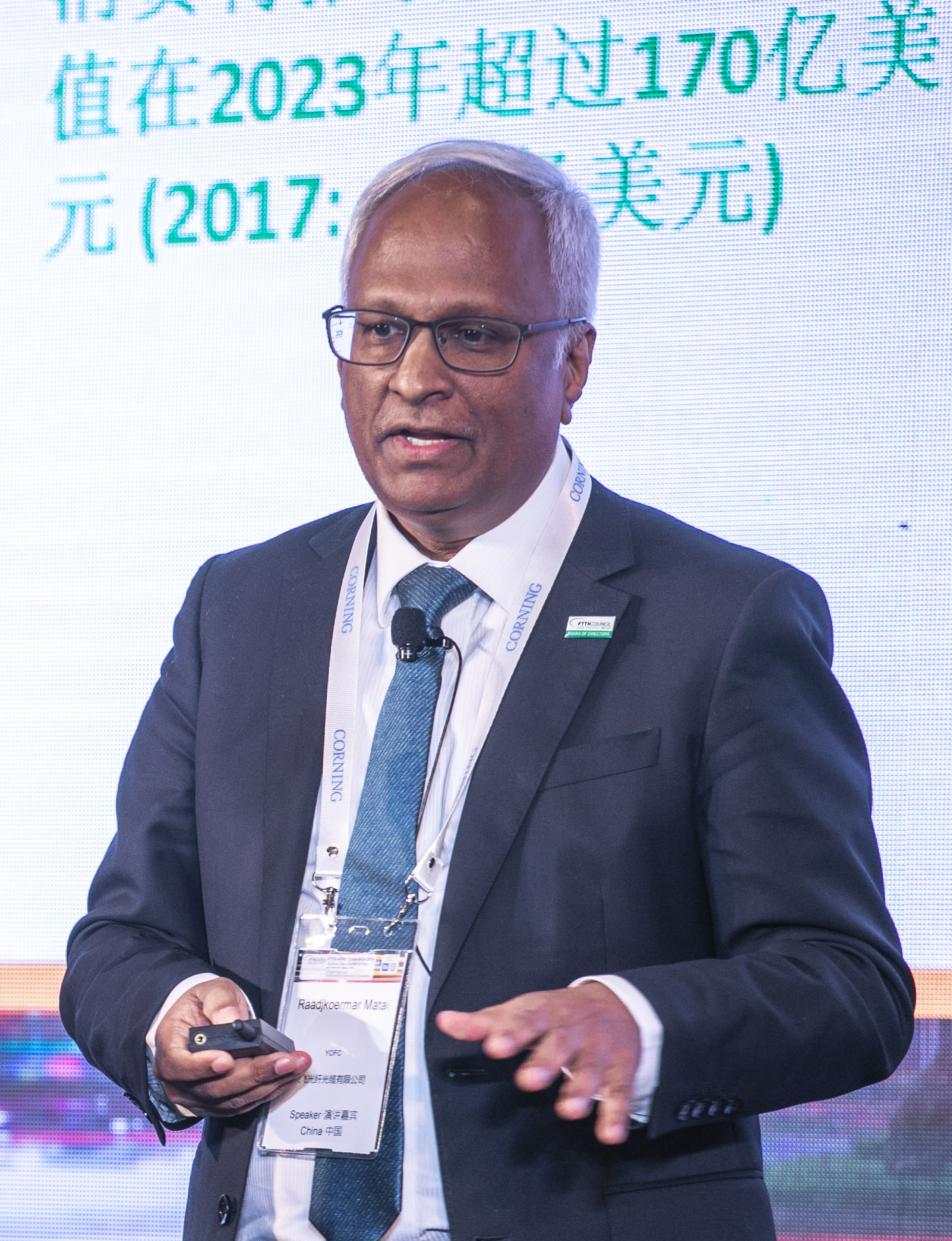Recently, the 2019 FTTH APAC Conference came to a successful conclusion. Global industry experts gathered at the event to discuss the impact of 5G commercialization on the fibre and cable industry, and talk about the current status as well as future trends of the fibre and cable communication industry in the 5G era. As a global leader in the optical communications industry, YOFC has been devoted to the research and development of the latest fibre technology, in order to achieve higher capacity and better connectivity. In addition to promoting the growth of fibre and cable demand, 5G network requires low latency and large bandwidth support, hence putting higher requirements on fibre production and performance. At the conference, Mr. Raadjkoemar Matai, YOFC Chief Scientist for Fibre delivered a keynote speech entitled How Fibre Supply Chain in China Supports the Next Wave of Global Network Deployment, and elaborated from both technical and market perspectives.

From technical perspective:
1. The size of fibre preform will increase further. In 1980, fibre preform was 5 to 7 mm in diameter and could be drawn into fibre of 600 to 900 m in length. Around the year 2002, changes in market environment urged the fibre manufacturing industry to develop a new generation of preforms with diameter increased from 80 mm to 150 mm. By now, the diameter of fibre preform has exceeded 200 mm. In the future, the size of fibre preform will further increase.
2. The drawing technology will be further improved. The equipment and processes for drawing large-size preforms are in place, and high-speed fibre-drawing technology is becoming more sophisticated.
3. The attenuation factor of fibre products is being reduced. The ultra-low attenuation fibre greatly increases the transmission distance between two base stations, reducing total number of base stations and effectively lowering network construction cost as well as operation and maintenance cost.
4. The new-generation of communication fibre products will be pushed to the market. At present, total network solutions adopted by operators include submarine cable systems, backbone networks, metropolitan area networks, access networks, FTTx, etc., and the types of fibre being used vary, including G.654, G.652. D, G.657, etc. In the future, there will be a certain increase in the demand for ultra-low attenuation and large effective area fibre (ULL-G.654), small diameter bend insensitive fibre and high fibre density cables. In addition, there will be also demand for multi-core fibre (MCF) and few-mode fibre (FMF).
5. The next-generation of space division multiplexing (SDM) fibre features a modal distribution that supports a large number of parallel spatial paths. This type of fibre can increase fibre transmission capacity and effectively satisfy the need for bandwidth and capacity escalation.
6. The next-generation of special fibre will also appear. Although the demand for specialty fibre is much less than that for regular communication fibre, in some special areas, special fibre outperforms regular communication fibre to a large extent.
From market perspective:
1. Gigabit FTTP will be gradually popularized by 2020. The Ultra-HD video traffic and the increased number of users have led to a surge in the bandwidth demand, and FTTP popularization will be accelerated in the future.
2. 5G will be the main propellant for the next wave of fibre consumption. Throughout the 35 years from 1990 to 2026, the global fibre consumption have been dynamically changing and experiencing several peaks.With the formal commercialization of 5G in China by the year of 2020, the 5G fronthaul solutions and the ultra-dense networking of 5G require a huge amount of fibre to be consumed, hence the global demand for fibre cable will increase drastically and the consumer demand will be stronger than that during the 4G period.
3. The extensive application of the next-generation of communications fibre products will strongly backup the next wave of fibre consumption. The wide application of the next-generation of communications fibre products featuring the preform fabrication technology, the fibre drawing technology, the fibre loss-reduction technology and a full range of ultra-low-loss single-mode fibre and bend-resistant OM5 multi-mode fibre will strongly support this wave of consumption.
With more than 30 years of industry experience and expertise, YOFC has become an industry leader in integrated fibre and cable solutions. Thanks to these technologies and products, the entire industry has been moving forward rapidly. Acting on the mission of "Smart Link Better Life", we look forward to leading the future with our expertise, joining hands with industry partners and creating a better future for the global optical communications industry!
-
2025.09.12YOFC Showcases Diverse End-to-End Portfolio at CIOE 2025
-
2025.06.19YOFC Unveils “AI-2030” Strategy to Drive the Next Generation of AI-Ready Optical Infrastructure
-
2025.04.30YOFC Releases 2024 ESG Report, Advancing Innovation with Purpose and Responsibility
-
2025.04.28New Breakthrough! YOFC Multi-mode Fibre Achieves 212G VCSEL High-Speed Transmission
-
2025.04.03OFC2025 | YOFC State Key Laboratory Publishes Multiple High-Level Research Papers
